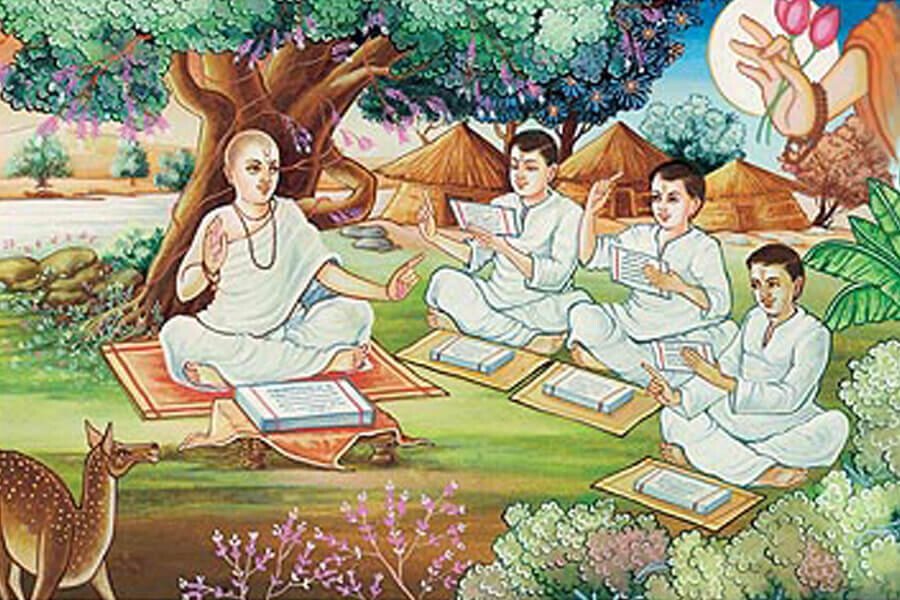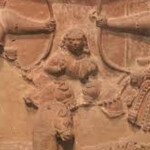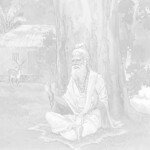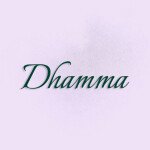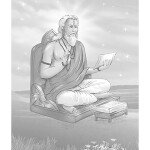Indians always prided themselves on their reliance on Pratyaksha Pramāṇa in contradistinction from the Abrahamic religions, for which belief in the Word of God or Allah was the very fundamental of their existence. The nearest that the Indians got to this absolutist principle of total belief, excluding all reason and rationality, was shabda pramāṇa. The principle is summed up in this shloka from Mahābhārata [1]
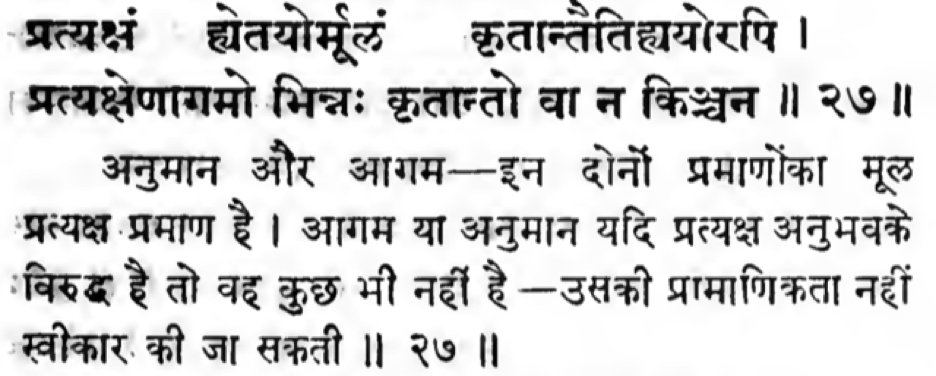
Pratyaksham hyetayormulam kritāntaitihyayorapi/pratyaksheṇāgamo bhinnah kritānto vā na kinchana ||
Root of both inferential evidence and scriptural evidence lies in direct evidence (empirical/experiential). If the inferential evidence or scriptural evidence is against the direct evidence, their validity cannot be accepted.
The interesting bit is that the conversation is taking place between Rishi Panchashikhā and King Janaka, and the Rishi is giving a poorvapaksha of the nāstikas, who are justifying their viewpoint by referring to what the āstikas always contend. So the value and primacy of pratyaksha pramāṇa was universal in our ancient traditions. In fact, it is as axiomatic in the Indian traditions as ‘belief’ or ‘shabda pramāṇa’ is in the Abrahamic traditions.
Islam had an interesting battle between the rationalists and the conservatives during the first half of the Abbasid period (750–1258 CE). The two sides were the Mutazzalites and the Asharites. While the former battled for reforming the interpretation of the Islamic texts to include ‘immanence of divine’, the Asharites insisted on the complete separation of Creator from his creation. Mansoor Hallaj was tortured and beheaded for proclaiming An’a Haq, or I am the Truth, a concept analogous to Aham Brahmasmi of Advaita Vedānta. The early Sufis were very much of this temperament, and dabbled with concepts of Cyclical Time in the style of what early Christians did before the Councils pronounced a curse on Cyclical Time (5th Ecumenical Council, 553 CE).
The issue was finally settled by Al Ghazali (died 1111 CE), the guru of all Sufis who decisively intervened on the side of the conservative Ulāmā, brought in the concept of ontologically broken Time, in which Allah creates and destroys the Universe moment to moment, and verily determines every action of a human being. This put paid to the spiritual doctrine that had been ushered in by the Mutazallites and taken up by the Tahqiqi (those with Haq, or Truth) school of Ibn Arabi, Ibn Rushd, and Ibn Sena (Avicenna), etc. and the movement of Ishtehad (reform) died an untimely death. This was the beginning of the ‘Dark Age of Islam’, that continues till date.
The triumph of conservatives in association with devotionists also brought in the concept of Taqlid, from the root qallada (imitation) that prohibited use of aql or reason by anyone else except the authorised clerics. The prohibition of the use of reason came in handy for the Christians who began a turn around from the Christian Dark Ages under St. Thomas Aquinas (1225–1274) by asserting Christian superiority in reason.
I have given this context as I found, to my amazement, during a debate on birth-based concept on Varna in a WA group, where my position was based on the Vedas and the Bhagwad Gita (which is unambiguous on the point, stating boldly that ‘Chāturvarṇam mayā srishtam, guṇa karma vibhāgashah — I have created four varnas according to innate qualities and acquired functions), I found that many traditionalists among Hindus also hold views on pramāṇa similar to the Ulāmā. Even as great masters throughout history, including Ādi Shankara, preached oneness behind all material reality, the traditionalists are not even ready to let one discuss the scriptures unless you have been trained in the Vedas under a proper Āchārya.
One such person, RK, was not even ready to let anyone get a word in unless he vetted the name of your Āchārya. While others or I would have their gurus, the sheer emphasis on Adhikāra smacked so much of Taqlid, that I was forced to write a piece on it.
Having prided myself on the scientific bases of the Sanātana tradition, as laid out in my 6-part series on ‘All Religions Are Not The Same’, it came as a rude shock that many well-meaning, erudite, and well qualified people continue to harbor the evidence of shabda pramāṇa as higher than pratyaksha. It is obviously not the Sanātana tradition as I gave out at some length in the above series.
The Sanātana and all other Dharmic traditions permit questioning, and permit all the elements of scientific method to be applied, i.e. questioning, verification, universalization, repetition and falsification are fully permitted to establish the Truth. Verification is permitted to be external, or even internal — empirical or experiential. Yet, even people well schooled in the sciences thwart questioning by citing Adhikāra and Paramparā. The two have great application in preserving the base of Dharma, but if people like RK ossify it and deny any falsification attempt, when rebuttal or falsification is not permitted, the unchallengeable doctrine gets reduced to dogma — exactly like any Abrahamic creed.
The varṇa concept is well accepted as a classification of tasks, and throughout history, jatis have moved up and down the varṇa ladder. Yādavas are the foremost example of this up and down movement. Even in recent history, important dynasties like Vijayanagara and Mysore were Yadavas.
The Karṇa story in Mahabharata is also an educative one. While Duryodhana made him the king of Anga to take him up the ladder of varṇa to the status of a Kshatriya, there were many who asserted Adhikāra even in those times. Parashurāma would have no issue with him if he had requested him to make him a Brahmin, as many like Vishvāmitra, Valmiki and Veda Vyāsa had become in the past. It was his cheating that made him abort his education. The epics are full of these narratives, such as the Mahabharata discussions in the Yaksha episode and the Nahusha episode during the vanavāsa of the Pandavas.
On the other hand, we have many Acharyas who assert birth-based varṇa. It would be fair to contend that birth-based varṇa is totally the handiwork of the Āchāryas in the medieval times. Almost all of them find their justification in Ādi Shankara, yet one of the most scathing indictments of not just birth-based varṇa, but discrimination based on varṇa is in Manishā Panchakam of Adi Shankara.
However, the Āchāryas disregard even this pratyaksha pramāṇa by quibbling on the context. We know that in the Sanatana traditions, context is more important than literalism, and even the Vedas have layers and levels of meanings at different levels of vāk.[2] Yet, the traditionalists do not baulk at anything while supporting birth-based varṇa. It is time for all of us who wish to have a glimpse of the Divine within to face up to this Taqlid like irrationality and liberate the Sanātana from the Purātana.
Printed with permission of the author (May 2020)
[Editor: For further reading on the 4 levels of Vak]
1 Mahābhārata: Shanti Parva: 211.26 (Critical Edition, Sukhthankar), 218:27 (Gita Press)↑
2 The psychic levels of vaikhari, madhyamā, pashyanti, and parā ↑


